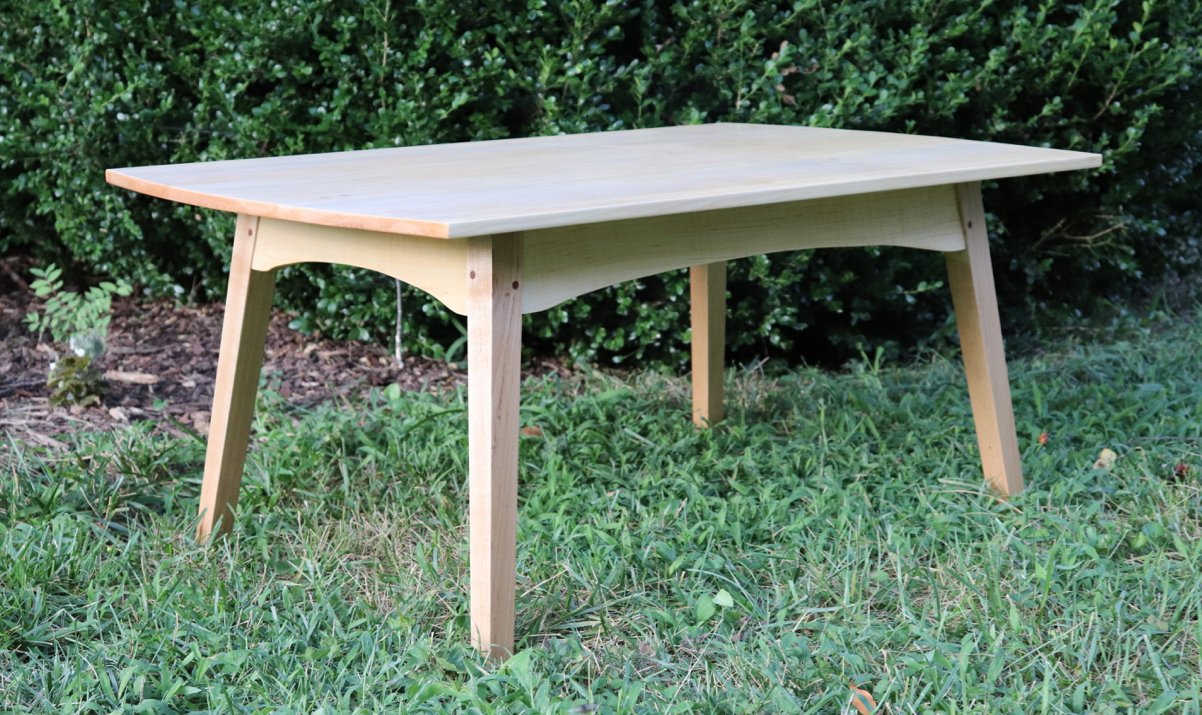Coffee tables
Because the coffee table is a modern form, I can’t follow my usual design process, which starts by looking at examples from the golden age of hand-tool woodworking — the 18th century. Tables from the past hundred years, though, are often designed with machines in mind, or simply aren’t (to my eye) particularly attractive. Although it seems a simple piece of furniture, the coffee table is a tricky design problem, because it will be seen not only from 360° around, but from a variety of heights, and has to look good from all of those perspectives.
Here are two tables that try to solve those problems.
I wanted to try carving cabriole legs, but a full-on Queen Anne table was a bad fit for my living room. So I simplified the traditional shape and ended with a squared foot, then joined the legs to a straight apron rather than using knee blocks. The hybrid form looks ready to spring — like a young goat, which is, after all, what “cabriole” means. (For another take on a modern cabriole leg, see my upholstered benches.)
Cherry, 2019.
This table, by contrast, is full-on mid-century modern in design, though its construction is traditional. The gentle arch of the apron flows into and accentuates the movement of the angled legs, and is echoed by the tabletop’s curved ends. The mortise-and-tenon joints are drawbored and pinned. Red maple, 2019.





